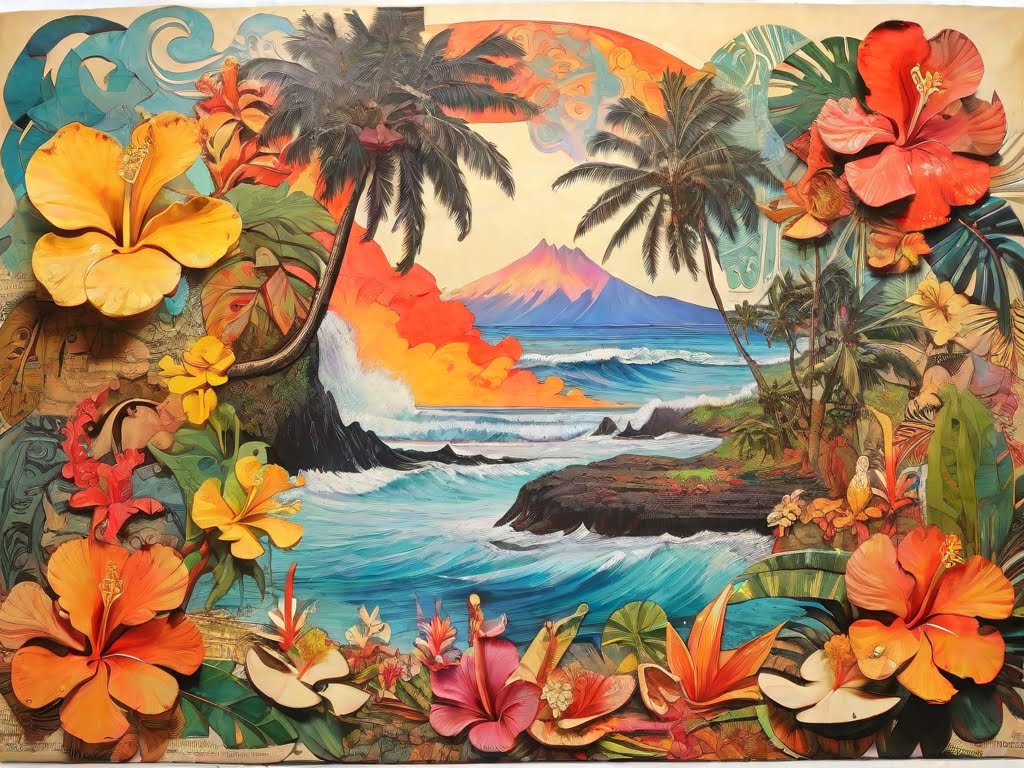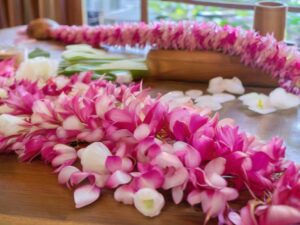Have you ever been intrigued by the unique and melodious sound of the Hawaiian language? In this article, we will take a journey into the captivating world of the Hawaiian language and explore the significance of preserving this native tongue. Join us as we delve into understanding basic words and phrases, allowing you to appreciate the richness and cultural heritage that the Hawaiian language has to offer. So, grab a cup of coffee, sit back, and let’s embark on an exciting linguistic adventure together!
Table of Contents
ToggleThe Hawaiian Language
Introduction to basic words, phrases, and the importance of preserving this native tongue
The Hawaiian language, also known as ʻŌlelo Hawaiʻi, holds a special place in the hearts and minds of the people of Hawaii. As a Polynesian language, it has deep roots and a rich history that reflects the culture and traditions of the Hawaiian people. In this article, we will explore the origins and development of the Hawaiian language, its current state, and the efforts being made to preserve this unique and beautiful native tongue.
History of the Hawaiian Language
Origins and development of the Hawaiian language
The Hawaiian language traces its origins back to the early Polynesian settlers who first arrived in the Hawaiian Islands around 1,500 years ago. Over the centuries, the language developed and flourished, becoming the primary means of communication among the Hawaiian people. It was a complex language, rich in vocabulary and grammar, encompassing everything from everyday conversation to the recitation of ancient chants and songs.
Effects of colonization on the Hawaiian language
Unfortunately, the arrival of European colonizers in the late 18th century had profound effects on the Hawaiian language. With the colonization came the introduction of English as the dominant language, leading to a decline in the use and importance of the Hawaiian language. Native Hawaiians were discouraged or even punished for speaking their native tongue, and as a result, the language began to diminish.
Current State of the Hawaiian Language
Number of speakers today
Today, the number of Hawaiian language speakers is relatively small compared to previous centuries. It is estimated that there are around 2,000 native speakers of Hawaiian, with another 18,000 individuals who have some level of fluency in the language. While these numbers may initially seem discouraging, there has been a resurgence of interest in revitalizing and promoting the Hawaiian language in recent years.
Challenges and threats to the language
Despite the recent efforts to preserve the Hawaiian language, there are still numerous challenges and threats that it faces. One of the main challenges is the lack of access to Hawaiian language education. Many schools in Hawaii do not offer Hawaiian language classes, making it difficult for young people to learn and embrace their native tongue. Additionally, the influence of English and the prevalence of technology have made it easier for English to dominate everyday conversations, further marginalizing the use of Hawaiian.
Efforts to Preserve the Hawaiian Language
Government initiatives and policies
Recognizing the importance of preserving the Hawaiian language, the Hawaiian government has implemented various initiatives and policies to support its revitalization. For example, the Hawaiian Language Act of 1978 established Hawaiian as one of the official languages of the state, alongside English. This act has paved the way for the integration of Hawaiian language programs in schools and the development of resources for learning the language.
Community-based language programs
In addition to government initiatives, various community-based language programs have been established to promote and preserve the Hawaiian language. These programs, led by passionate and dedicated individuals, offer classes, workshops, and immersion experiences to both native speakers and those eager to learn. They provide a supportive community where people can practice and foster their language skills, ensuring the continuity of the Hawaiian language for future generations.
Role of educational institutions in language preservation
Educational institutions also play a crucial role in the preservation of the Hawaiian language. Colleges and universities across Hawaii now offer Hawaiian language courses, allowing students to study the language as part of their academic journey. These institutions work hand in hand with community-based programs to provide comprehensive language education, recognizing the importance of preserving the language not only through informal means but also within formal educational structures.
Learning Basic Words and Phrases in Hawaiian
Useful everyday greetings and expressions
A great way to begin your journey with the Hawaiian language is by learning some basic greetings and expressions. Here are a few to get you started:
- Aloha (ah-LOH-hah) – Hello, goodbye, love, and affection
- Mahalo (mah-HAH-loh) – Thank you
- E komo mai (eh koh-moh MY) – Welcome
- Pehea ʻoe? (peh-HEH-ah o-eh) – How are you?
- Eō mai (eh-OH my) – Yes
Introduction to Hawaiian pronunciation
Pronunciation in Hawaiian can be challenging for non-native speakers due to its unique set of sounds. However, with practice and guidance, mastering the pronunciation is within reach. Notably, the vowels in Hawaiian (a, e, i, o, u) are pronounced individually, making each sound distinct. The consonants generally correspond to their English counterparts, but there are a few exceptions. Learning the correct pronunciation is key to effectively communicating in the Hawaiian language.
Hawaiian alphabet and pronunciation guide
The Hawaiian alphabet consists of eight consonants (h, k, l, m, n, p, w, and ʻokina) and five vowels (a, e, i, o, and u) that are pronounced distinctly. The ʻokina (`), also known as the “glottal stop,” is a special character that indicates a brief pause during pronunciation. Familiarizing yourself with the Hawaiian alphabet and its pronunciation will greatly assist you in learning the language and understanding the written word.
Common Hawaiian Vocabulary
Numbers and counting
Numbers are an essential part of any language, and Hawaiian is no exception. Here are the Hawaiian words for numbers zero to ten:
- Zero: ʻole (oh-leh)
- One: ʻekahi (eh-kah-hee)
- Two: ʻelua (eh-loo-ah)
- Three: ʻekolu (eh-koh-loo)
- Four: ʻehā (eh-HAH)
- Five: ʻelima (eh-lee-mah)
- Six: ʻeono (eh-OH-noh)
- Seven: ʻehiku (eh-HEE-koo)
- Eight: ʻewalu (eh-WAH-loo)
- Nine: ʻeiwa (eh-EE-vah)
- Ten: ʻumi (oo-mee)
Colors
Whether describing the vibrant Hawaiian landscapes or engaging in everyday conversations, colors are an essential part of communication. Here are some common colors in Hawaiian:
- Red: ʻulaʻula (oo-lah-oo-lah)
- Blue: uliuli (oo-lee-oo-lee)
- Green: uluʻulu (oo-loo-oo-loo)
- Yellow: melemele (meh-leh-meh-leh)
- Purple: poni (poh-nee)
- Orange: lālā (LAH-lah)
- Pink: ʻākala (ah-KAH-lah)
- Brown: meaʻai (meh-ah-ah-ee)
- White: kea (keh-ah)
- Black: ʻeleʻele (eh-leh-eh-leh)
Family vocabulary
Family is a fundamental aspect of Hawaiian culture, and knowing how to refer to family members is essential for understanding and participating in conversations. Here are some common family terms in Hawaiian:
- Mother: makuahine (mah-koo-ah-hee-neh)
- Father: makua kane (mah-koo-ah KAH-neh)
- Grandmother: kupunawahine (koo-poo-nah-wah-hee-neh)
- Grandfather: kupunakane (koo-poo-nah-KAH-neh)
- Sister: kaikuahine (kah-ee-koo-ah-hee-neh)
- Brother: kaikunane (kah-ee-koo-NAH-neh)
- Aunt: makua kane (mah-koo-ah KAH-neh)
- Uncle: mahuhu kiʻekiʻe (mah-hoo-hoo kee-eh-kee-eh)
- Cousin: kaikaina (kah-ee-kah-ee-nah)
- Child: keiki (keh-ee-kee)
Nature and environment
The Hawaiian Islands are renowned for their breathtaking natural beauty, and the Hawaiian language has rich vocabulary related to nature and the environment. Here are some common words to help you describe the world around you:
- Ocean: kai (kah-ee)
- Mountain: mauna (mah-oo-nah)
- Beach: kahakai (kah-hah-kai)
- Sun: lā (lah)
- Moon: mahina (mah-hee-nah)
- Star: hōkū (hoh-koo)
- Tree: lāʻau (lah-ah-oo)
- Flower: pua (poo-ah)
- Rain: ua (oo-ah)
- Wind: makani (mah-kah-nee)
Food and drinks
Food is an integral part of Hawaiian culture, and the Hawaiian language has numerous words and phrases related to culinary delights. Here are some common Hawaiian food and drink vocabulary:
- Fish: iʻa (ee-ah)
- Coconut: niu (nee-oo)
- Pineapple: hala kahiki (hah-lah kah-hee-kee)
- Pork: puaʻa (poo-ah-ah)
- Poi: poi (poy)
- Coffee: kope (koh-peh)
- Water: wai (wah-ee)
- Breadfruit: ʻulu (oo-loo)
- Sweet potato: ʻuala (oo-AH-lah)
- Rice: laiki (lah-ee-kee)
Activities and hobbies
Language is an excellent tool for expressing our interests and engaging in activities. Here are some common Hawaiian words and phrases related to activities and hobbies:
- Surfing: heʻe nalu (heh-eh nah-loo)
- Hiking: hele mai (heh-leh my)
- Dancing: hula (hoo-lah)
- Singing: leo ʻana (leh-oh ah-nah)
- Reading: heluhelu (heh-loo-heh-loo)
- Swimming: kūʻauhau (koo-ah-oo-how)
- Photography: kiʻi ʻana (kee-ee ah-nah)
- Gardening: mahi ʻai (mah-hee ah-ee)
- Painting: paʻi (pah-ee)
- Playing music: hoʻokani (hoh-oh-kah-nee)
Time and dates
Knowing how to tell the time and refer to specific dates is crucial for effective communication. Here are some key words and phrases related to time and dates in Hawaiian:
- Today: i kēia lā (ee kay-ee-ah lah)
- Tomorrow: apōpō (ah-poh-poh)
- Yesterday: nei lā (neh-ee lah)
- Week: mau lā (mau lah)
- Month: mahina (mah-hee-nah)
- Year: makahiki (mah-kah-hee-kee)
- Morning: kakahiaka (kah-kah-hee-ah-kah)
- Afternoon: awakea (ah-wah-keh-ah)
- Evening: ahiahi (ah-hee-ah-hee)
- Night: pō (poh)
Phrases for Social Interaction
Greetings and introductions
Greetings and introductions are an essential part of social interaction. Here are some common phrases to help you make a favorable impression in Hawaiian:
- Hello: aloha (ah-LOH-hah)
- How are you?: Pehea ʻoe? (peh-HEH-ah o-eh)
- My name is…: ʻO wau koʻu inoa… (oh wow koh-oo ee-noh-ah)
- Nice to meet you: Aloha auaneʻi (ah-loh-hah ah-oo-ah-neh-ee)
- What is your name?: ʻO wai kou inoa? (oh why koh-ooh ee-noh-ah)
Expressing gratitude and appreciation
Showing gratitude and appreciation is a vital aspect of Hawaiian culture. Here are some phrases you can use to express your gratitude in Hawaiian:
- Thank you: Mahalo (mah-HAH-loh)
- Thank you very much: Mahalo nui loa (mah-HAH-loh noo-ee LOH-ah)
- I appreciate it: Mahalo iā ʻoe (mah-HAH-loh ee-AH o-eh)
- I am grateful: Mahalo iāʻoe no kou kōkua (mah-HAH-loh ee-AH o-eh noh koh-oo koh-koo-ah)
Asking for directions
When exploring the Hawaiian Islands, it may be helpful to know how to ask for directions. Here are some phrases that can come in handy:
- Excuse me: E kala mai (eh kah-lah my)
- Where is…?: ʻAuhea ka…? (ah-oo-heh-ah kah)
- Can you help me?: Hōʻike mai iāʻoe i ka huakaʻi? (hoh-ee-kay my ee-AH-oh-eh ee kah hoo-ah-kah-ee)
Ordering at a restaurant or café
If you find yourself dining at a Hawaiian restaurant or café, having some phrases at your disposal can enhance your experience. Here are some phrases you can use when ordering:
- I would like…: Makaʻuā iā… (mah-kah-oo-ah ee-AH)
- What do you recommend?: He aha kou kuhi hauʻoli? (heh ah-hah koh-oo koo-hee how-o-oh-lee)
- Could I have the bill?: Hiki iaʻu ke komo i ka pila? (hee-kee ee-AH-oh-oo keh koh-moh ee kah pee-lah)
Cultural Significance of Hawaiian Language
Connection between language and Hawaiian culture
Language is more than just a means of communication; it is an integral part of a culture’s identity. The Hawaiian language holds immense cultural significance for the Hawaiian people, as it encapsulates their history, customs, and connection to the land. By preserving the Hawaiian language, the cultural practices, stories, and values of the past are carried forward into the present and future.
Traditional chants and songs
Chants and songs, known as mele in Hawaiian, play a vital role in Hawaiian cultural practices. They serve as a way to celebrate, honor, and perpetuate the history and legends of the Hawaiian people. Learning the Hawaiian language allows individuals to fully appreciate and participate in the beauty of traditional chants and songs, keeping them alive for generations to come.
Importance of language in preserving cultural practices
Language acts as a vessel for preserving cultural practices, passed down through generations. The preservation of the Hawaiian language is closely tied to the continuity of cultural traditions such as hula, lei-making, and the art of Hawaiian storytelling. By embracing and learning the Hawaiian language, individuals help ensure the longevity and authenticity of these cultural practices, safeguarding the essence of Hawaiian identity.
Online Resources for Learning Hawaiian
Websites and apps for learning Hawaiian
In today’s digital age, there are numerous online resources available for learning the Hawaiian language. Websites such as Duolingo, Memrise, and Transparent Language offer interactive lessons and practice exercises to help you develop your language skills. Additionally, apps like Drops and Pūnana Leo’s ‘Olelo Hawaiʻi app provide user-friendly interfaces and engaging content to make learning Hawaiian convenient and fun.
Online communities and language exchange platforms
Another valuable resource for learning Hawaiian is to connect with online communities and language exchange platforms. Platforms like Reddit, Facebook groups, and language learning forums provide opportunities to connect with other learners, native speakers, and language enthusiasts. Engaging in conversations and exchanges with fellow language learners can enhance your learning experience and provide a supportive community for your language journey.
Conclusion
The Hawaiian language is not only a means of communication but a living expression of the unique culture and traditions of the Hawaiian people. By learning and preserving this beautiful language, we honor and celebrate the rich heritage of Hawaii. Despite the challenges it faces, the Hawaiian language continues to thrive through the efforts of government initiatives, community-based programs, and educational institutions. By embracing and actively engaging with the Hawaiian language, we not only revitalize and promote its use but also ensure that future generations will have the opportunity to connect with their roots and preserve the essence of Hawaiian culture.





